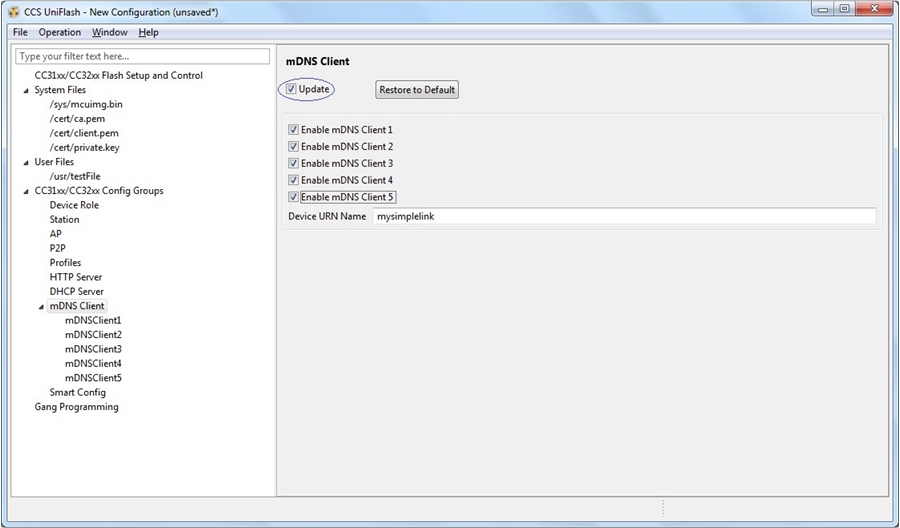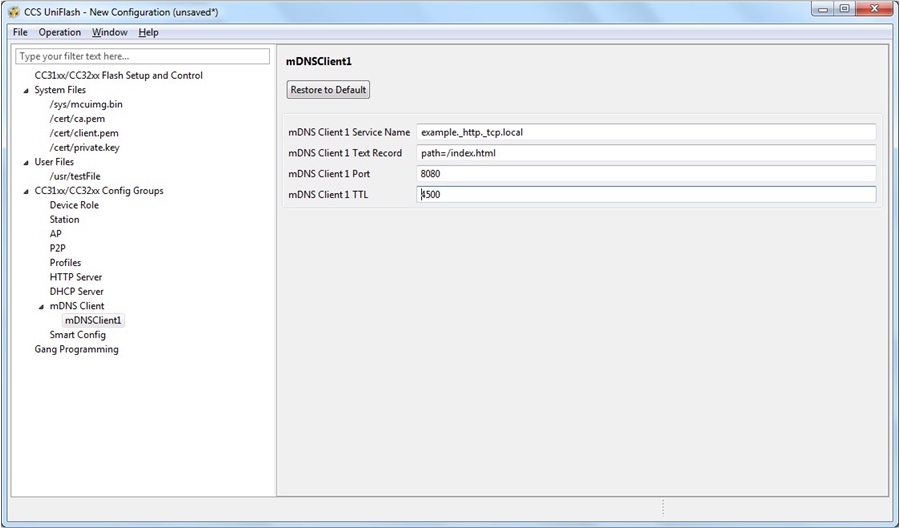SWRU558 June 2020 CC3100 , CC3100MOD , CC3200 , CC3200MOD
-
SimpleLink Wi-Fi CC3100, CC3200 UniFlash
- Trademarks
- 1 Introduction
- 2 Installation
- 3 Prerequisites
- 4 Uniflash Block Diagram
- 5 Session Support
- 6 Secured File System Support
- 7 GUI Interface
- 8 CC3200 Support
- 9 Command Line Support
- 10 Configuration File Support
- 11 Image Creation and Programming
- 12 Troubleshoot/Debugging
- 13 Limitations
- 14 References
- A UART Connection
10.3.7.6 Configuration
Figure 27 shows a screenshot of all the mDNS Client parameters. Some parameters have default values in case the user decides to skip configuration. However, mDNS services are mostly user specific and require the user configuration. There are two relevant screens: the main screen and per service screen. In the main screen, the following parameters are defined:
- Enable mDNS Client x (where x is an index 1-5). In this example, two mDNS services are enabled
- Device URN Name is set to default mysimplelink
 Figure 27. Mdns Main Screen
Figure 27. Mdns Main Screen In the service screen, the following parameters are defined for service #1:
- mDNS Client 1 Service Name. In this example, the service name is set to example._http._tcp.local.
- mDNS Client 1 Text Record. In this example, the text record is set to path=/index.html.
- mDNS Client 1 Port. In this example, the port is set to 8080.
- mDNS Client 1 TTL. In this example, TTL is set to 4500.
 Figure 28. Mdns Configuration
Figure 28. Mdns Configuration